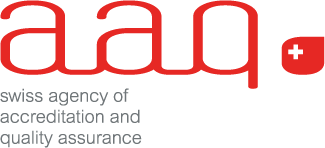Publication: Strengths of quality assurance at higher education institutions in Switzerland
Summary
A thematic analysis of the AAQ examines in depth the strengths of the quality assurance system in six institutional accreditation procedures according to HEdA – in contrast to the weaknesses that are usually the focus of the assessment. For this purpose, the strengths are extracted from the self-assessment reports, which were written by the higher education institutions themselves, and the expert reports, which reflect the external assessment of the quality assurance system of the higher education institutions, and are sorted and analysed with regard to the quality standards. In addition, their use in the reports is considered in the analysis and the significance of strengths is investigated more closely by examining the term "strength".
The analysis shows that there is no uniform understanding of strengths and that the reference of strengths to quality assurance (and the standards) is not always easily visible and comprehensible. The strengths have only a secondary role in the entire process of institutional accreditation, but they can also have very specific functions and influence the overall effect. Although this was certainly not used consciously or intentionally in all cases, the strengths can distract from weaknesses or they can cushion criticism somewhat. But also the opposite variant is visible, where a weakness makes a strength even stronger. In each case it is important to perceive the context, in which strengths are, and not to regard them completely isolated. The critical examination of the strengths (and weaknesses) and their use can also result in a sensitized understanding of them.
Probably because of the small number of procedures involved, no clear picture of prominent strengths can be drawn. Thus, many different strengths are altogether recognizable and few accumulations. When comparing the two types of reports (self-assessment and external assessment), large differences in the number of strengths mentioned are particularly noticeable. The self-assessment reports count almost twice as many strengths as the external assessment reports. Despite the very different design of the two types of reports, some similarities can be identified which also have a direct relation to the quality standards. This shows that quality assurance is generally well anchored and broadly supported. The higher education institutions are financially well established and secured on a longer-term basis. The infrastructures are of good quality and the staff and junior researchers are supported and promoted.
Report Stärken der Qualitätssicherung in schweizerischen Hochschulen (de)

Comments are closed.